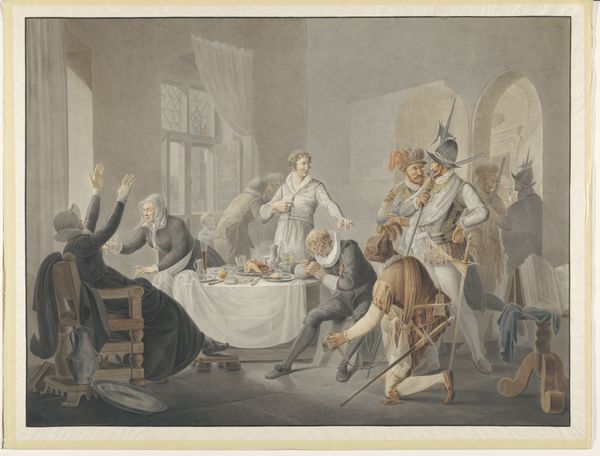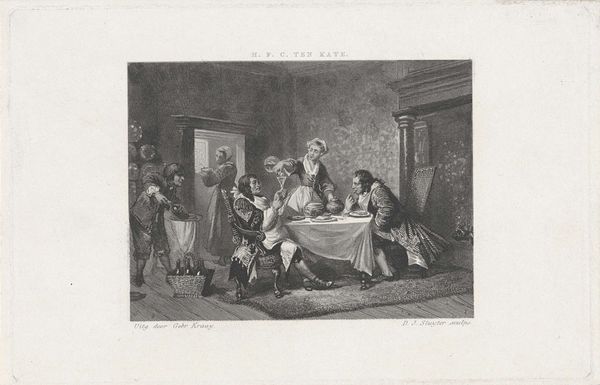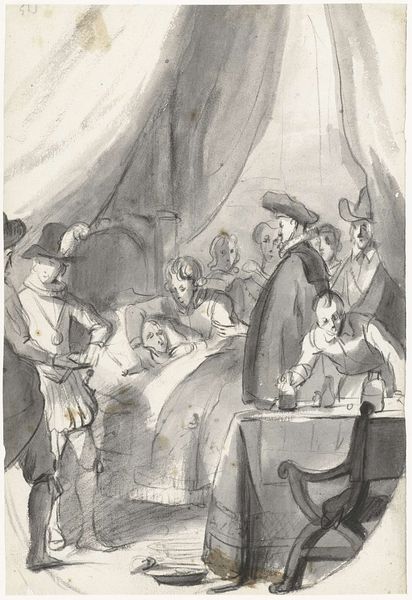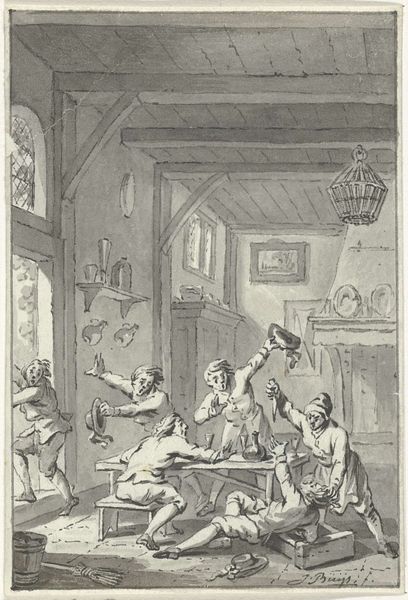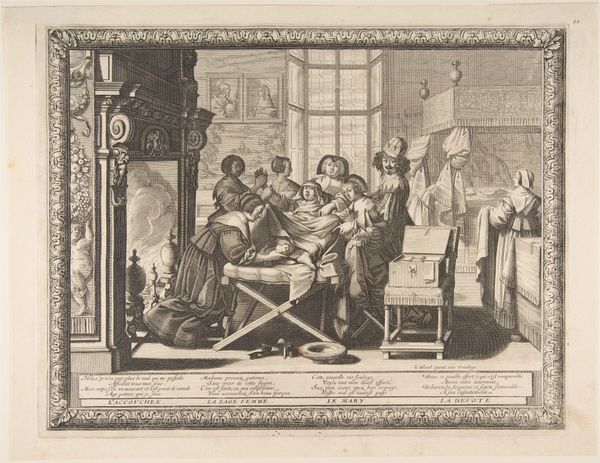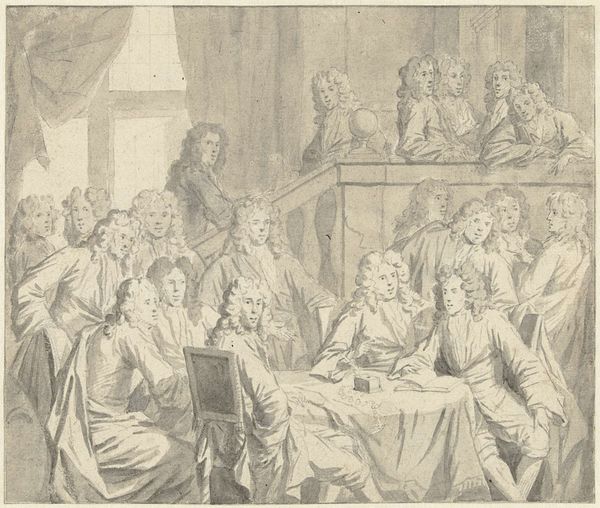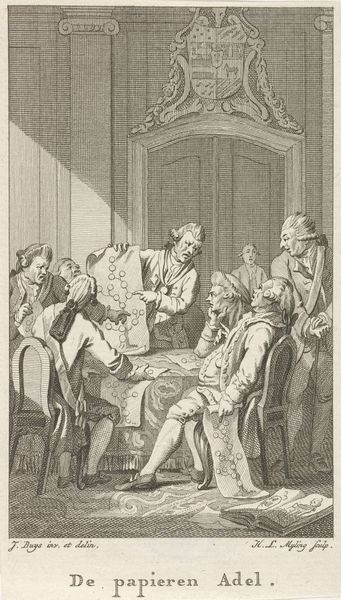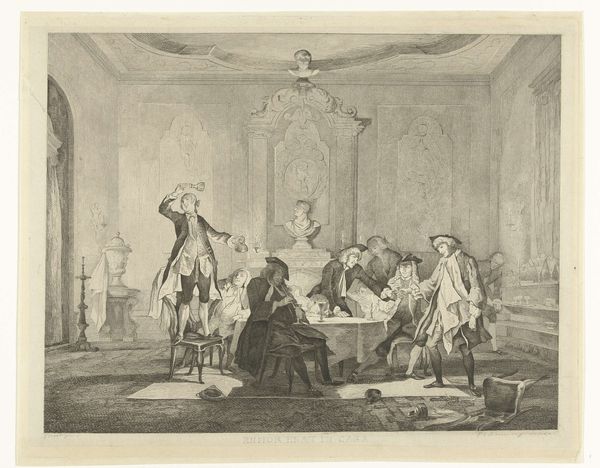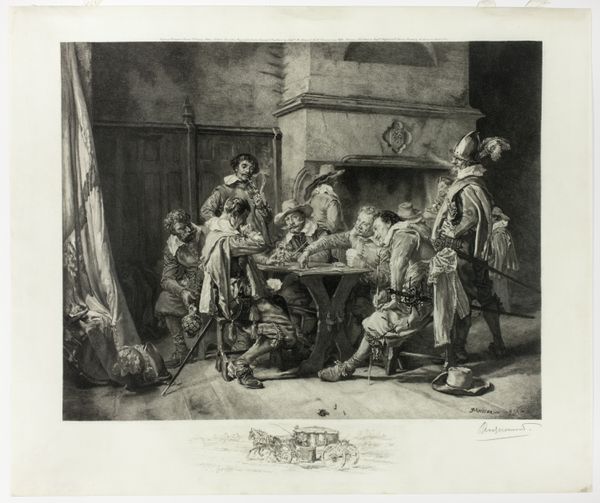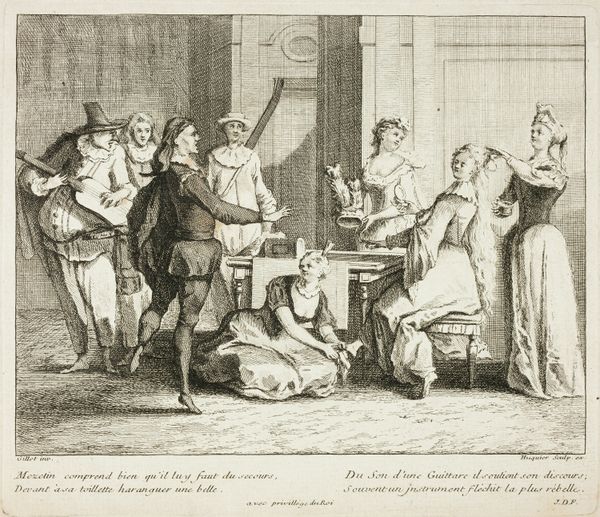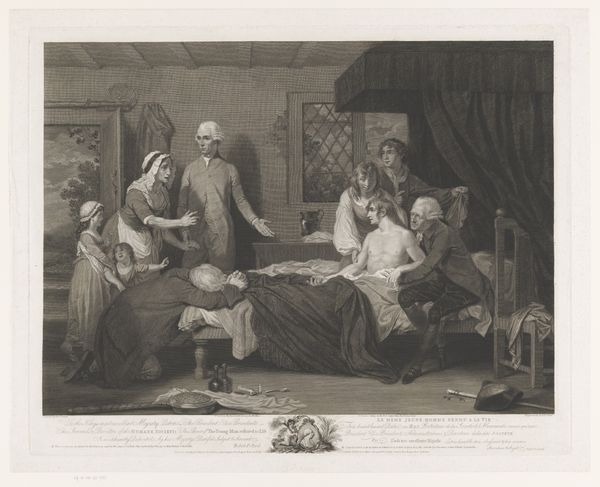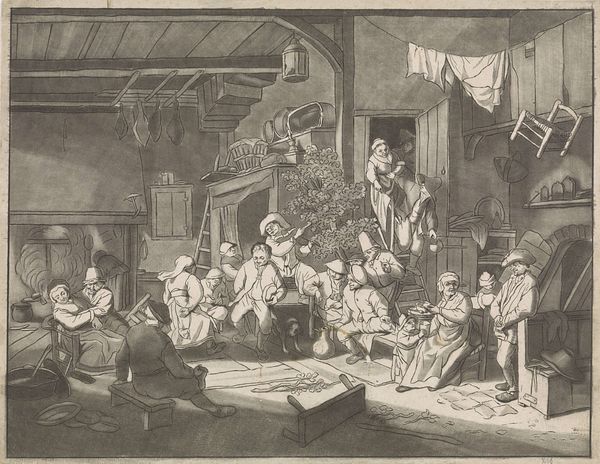
Gevangenneming van Pieter Dirksz. Hasselaer, 1573 1809 - 1813
0:00
0:00
joannespietervisserbender
Rijksmuseum
Dimensions: height 266 mm, width 355 mm
Copyright: Rijks Museum: Open Domain
Curator: This print is "Gevangenneming van Pieter Dirksz. Hasselaer, 1573" (Arrest of Pieter Dirksz. Hasselaer, 1573) made sometime between 1809 and 1813, by Joannes Pieter Visser Bender. The Rijksmuseum holds this engraving. Editor: It has a palpable sense of drama, doesn't it? A flurry of activity focused around a central table, all rendered in monochrome. Very intense, with people caught mid-action. Curator: It depicts a moment from Dutch history, the capture of Pieter Dirksz. Hasselaer, a figure associated with Haarlem during the siege by the Spanish. It’s interesting how Visser Bender, much later, chooses to portray this event. Editor: The soldier’s imposing spear and armour definitely command attention. He’s quite the archetype of authority here, contrasting starkly with the evident fear in the eyes of the woman behind him. What symbols or details stand out to you from a symbolic perspective? Curator: What interests me is how such prints, widely disseminated, shaped the popular imagination of this historical event. This image would have played a part in constructing a particular narrative, influencing perceptions of Dutch resistance against Spanish rule. Editor: Absolutely, images like this cement national narratives, don’t they? Hasselaer appears caught off guard; his hand gestures seem almost like a plea, revealing his vulnerability. The chains and keys at the front almost seem to serve as symbols of lost liberty. Curator: Indeed. Visser Bender's choice of realism as a style serves a crucial political function, it provides the feeling of accuracy. However, this print's 'realism' is clearly curated. Editor: The positioning of the viewer makes it easier to feel empathetic with the apparent plight of Hasselaer. Overall, an intense glimpse into a pivotal moment framed for posterity, shaped with carefully chosen imagery and emotions. Curator: Ultimately, viewing historical scenes like these compels one to consider the politics behind image-making itself and reflect on how interpretations of historical events serve contemporary society. Editor: A dramatic visualization that captures more than just a moment—it encapsulates fear, authority, and the seeds of resistance within a seemingly simple engraving.
Comments
No comments
Be the first to comment and join the conversation on the ultimate creative platform.
